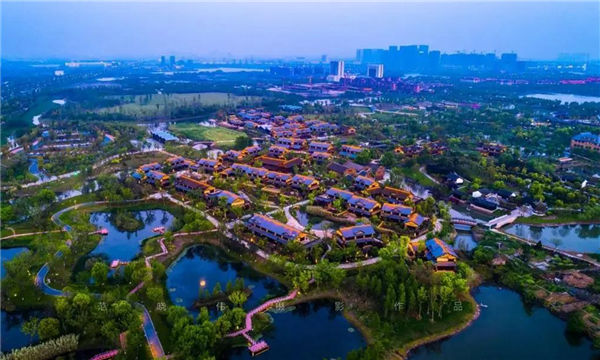Huzhou achieves prosperity by sticking to green development path

A view of Huzhou in East China's Zhejiang province. [Phoot/WeChat account: huzhoufabu]
Huzhou has been sticking to the high-quality development road mapped out by the concept which states "lucid waters and lush mountains are invaluable assets".
The concept, also known as the Two Mountains theory, was first proposed in Yucun village in the city's Anji county.
Under the guidance of the concept, the city has seen remarkable accomplishments in the country's drive to build a moderately well-off society in all respects.
Huzhou's GDP rose from 174.81 billion ($25.33 billion) to 312.24 billion yuan from 2012 to 2019, with average annual growth of 8.3 percent, according to a government press conference Nov 5.
The city's per capita GDP jumped from 67,000 yuan to 117,000 yuan over the same period, 65 percent higher than the national average, exceeding the World Bank's standard for high-income economies.
The city's urbanization rate has reached 64.5 percent.
Huzhou has also been playing an active role in the integrated development of Yangtze River Delta. It has signed cooperative deals with nine cities in the YRD as well as institutions including Shanghai Stock Exchange, Zhejiang University and the University of Science and Technology of China.
The per capita disposable income of the city's urban residents stood at 59,028 yuan in 2019, up 79 percent from 2012, while the figure for their rural counterparts reached 34,803 yuan, a jump of 102 percent.
Its urban Engel coefficient, a measure of food expenditure as a proportion of total household spending, has dropped 28 percent.

 Print
Print Mail
Mail
 20 Cultural Symbols
20 Cultural Symbols Why Zhejiang
Why Zhejiang Experiencing high-tech products at WIC
Experiencing high-tech products at WIC Zhejiang Release
Zhejiang Release Zhejiang News
Zhejiang News